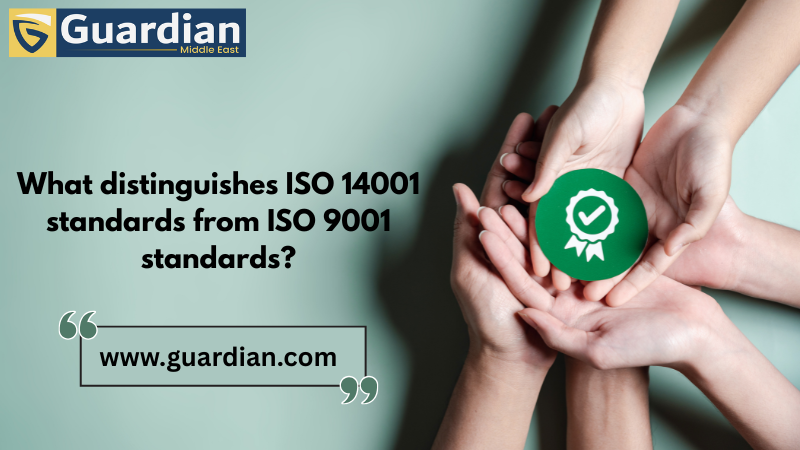The worldwide Organization for Standardization (ISO) created two worldwide certifications, ISO 14001 and ISO 9001, with the goal of enhancing performance and credibility in particular domains. Despite having a similar architecture, these standards have different goals and purviews.
Environmental Management System (EMS): ISO 14001
Environmental management is the main emphasis of the ISO 14001 standard. It aids businesses in reducing their environmental impact, adhering to relevant laws, and accomplishing goals for ongoing environmental improvement. The following are some salient features of ISO 14001:
- Goal: to minimize the ecological imprint, effectively manage resources, and guarantee adherence to environmental laws.
- Application scope: Waste management, efficient use of resources, pollution reduction, and improved environmental performance.
- Advantages : enhanced stakeholder connections, lower operating expenses (for example, by using less energy), better brand image, and regulatory compliance.
ISO 9001: Quality Management System (QMS)
In contrast, the ISO 9001 standard emphasizes quality. It is intended to assist businesses in making sure that their goods and services constantly satisfy consumer needs and raise customer satisfaction levels. Important points:
- Goal: to boost client satisfaction, enhance internal procedures, and guarantee consistency in the caliber of goods and services.
- Application scope: Design, development, production, delivery, and post-purchase support for goods and services.
- Advantages:increased operational effectiveness, lower expenses, more customer satisfaction, and simpler entry to new markets.
Common Structure: Annex SL
The high-level structure that makes it possible to integrate several management system standards is provided by Annex SL. This makes it easier for firms that want to adhere to several management system standards to integrate ISO 14001 and ISO 9001 because they have a similar structure. Important components of this framework consist of:
- Common core: All management system standards share the same fundamental framework, making integration and deployment easier.
- Common terminology: To prevent misunderstandings, terms and definitions are used consistently across several standards.
- Process approach: Promoting the use of a process approach for management and ongoing system improvement.
Integration of Standards
Because ISO 14001 and ISO 9001 are compatible, firms can more easily and effectively integrate them into a single management system. Significant gains in total performance can result from this integration, guaranteeing both environmental responsibility and high-quality goods and services.
Find out more about the requirements:
Why is ISO 9001 and 14001 certification so important?
1. Enhanced Efficiency and Performance
- Process optimization : Standards promote the use of a process-based strategy that helps find inefficiencies, cut expenses, and boost operational effectiveness.
- Continuous improvement : Continuous improvement is necessary for certification, which forces businesses to innovate and continuously enhance their procedures and offerings.
2. Adherence to Regulations
- Lowering legal risks: Organizations that adhere to accepted standards are better able to comply with quality and environmental rules, which lowers the possibility of fines or legal action.
- Adapting to regulatory changes: To stay compliant, standards are routinely evaluated to include new laws and best practices.
3. Advantages over competitors
- Market differentiation : Certification can serve as a marker of quality and reliability, distinguishing products and services in a competitive market.
- Access to new markets : Some industries and markets specifically require suppliers to be certified, thus opening up new business opportunities.
4. Stakeholder Confidence
- Enhanced customer satisfaction: Businesses can boost customer loyalty and satisfaction by guaranteeing quality and better addressing client requirements.
- Employee motivation and engagement can be raised by safer workplaces and better procedures.
- Investor and partner relations: Because these standards demonstrate a dedication to sustainability and quality, certification can bolster the trust of investors and business partners.
5. Environmental and Social Responsibility
- Environmental impact management: Obtaining ISO 14001 certification shows a dedication to environmental preservation, which is becoming a more significant factor for regulators and consumers.
- Positive impact on society: Organizations can contribute positively to their neighborhood and beyond by enhancing their environmental and social impact.
6. Encouraging Ongoing Development
Certification is a continuous process that calls for frequent audits and a dedication to progress rather than an end in and of itself. In addition to helping businesses adapt and prosper in changing business contexts, this promotes a culture of excellence and innovation.






